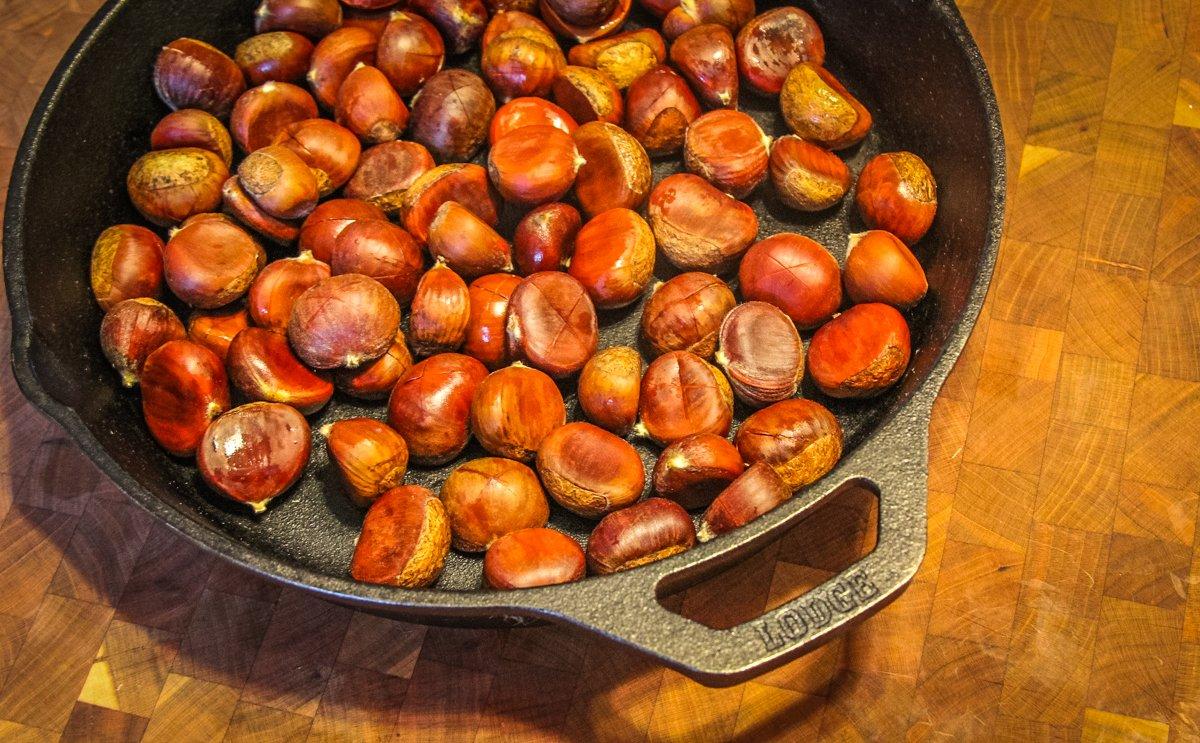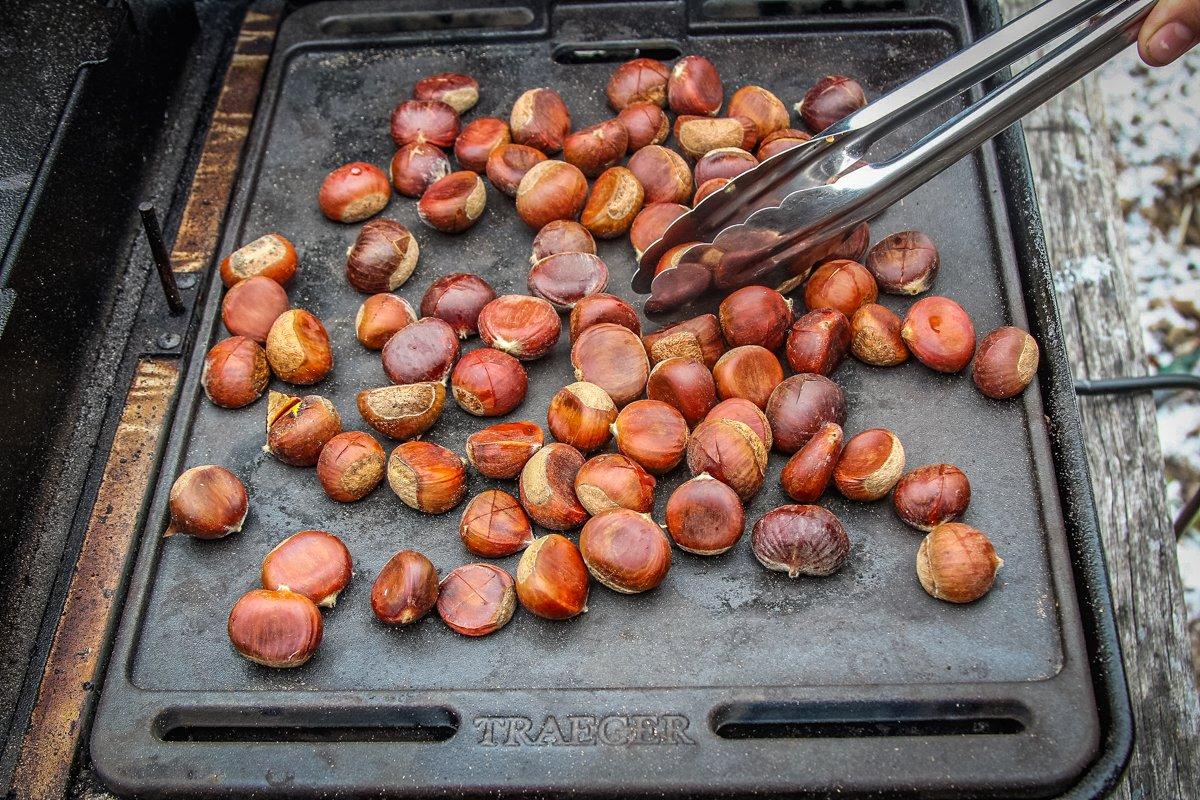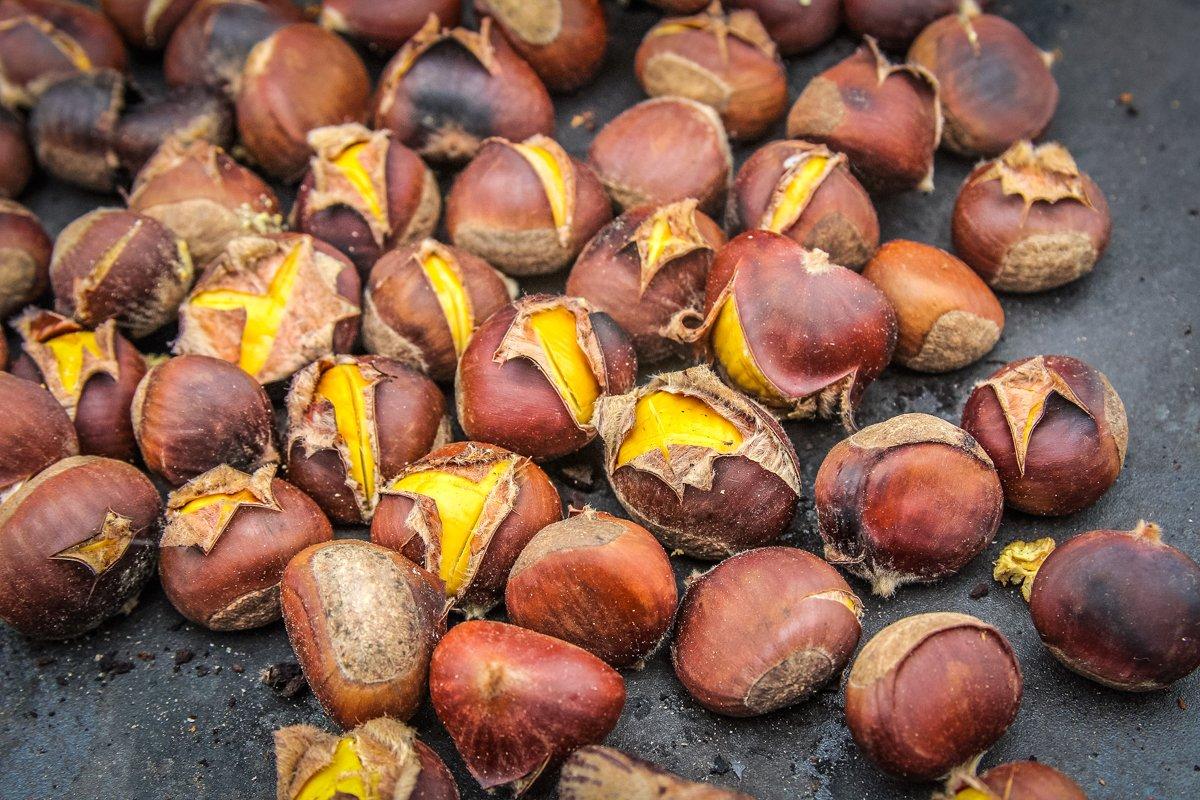It's that time of year. Be they roasted on an open fire, in the oven, or on the Traeger Grill, chestnuts are good eats.
How to Roast Chestnuts
If you walked through the eastern deciduous forest a century or more ago, you'd find yourself surrounded by chestnut trees. Some 4 billion of them. The American chestnut was a vital source of food for both wildlife, livestock and people, and a source of lumber for building homes and barns. Chestnuts were always among the largest, fastest-growing trees in the woods.
And then something happened. In 1904 a fungal blight was accidently introduced from the Orient. In the span of 40 years, some 30 million acres of American Chestnut trees died. It was an environmental, ecological, and economical disaster.
Luckily, in the early 1950's, James Carpenter found a thriving chestnut among a grove of dead and dying trees. Realizing the tree may very well be resistant to the blight, he sent budwood to well-known plant breeder Dr. Robert T. Dunstan.
Dunstan grafted the buds to Chinese chestnut rootstock. The resulting trees proved to be resistant to the chestnut blight. Over the next 60 years, the Dunstan and other blight-resistant varieties of chestnut are again growing in eastern forests.
Many of those chestnuts have been carefully planted and tended by hunters who realize just how valuable of a food source the chestnut can be to deer and other wildlife. These trees now produce nuts that fall to the ground from September through January.
If you are lucky enough to have a producing chestnut or two on your property, and you can beat the deer to them, pick up a few pounds of chestnuts for a snack. They are easy to roast, and they make a great snack on a cold winter's evening or a great appetizer at a party or get together.
While the outer skin of the chestnut is tough, the roasting process makes them easy to peel. Start with a sharp knife. Make a shallow cross cut through just the skin of the chestnut. The scoring of the skin allows the steam inside the nut to pop it open as it roasts.
Once you have all the nuts scored, soak them in a bowl of warm water for about 30 minutes to an hour. The soaking process adds moisture to the nut and starts to soften the skin. After the nuts have soaked, drain the water and pat the nuts dry with a clean towel.
You can buy a special roasting pan for chestnuts, but it isn't really necessary. Any cast-iron griddle or a Lodge skillet will work.
Chestnuts can be roasted in the oven, over an open fire, or on the grill. We did this batch on the Traeger Ranger's cast-iron griddle.
Heat the grill to 375 degrees. Place the scored chestnuts in a single layer over the cast-iron griddle. Roast for 25 to 30 minutes or until the skin starts to peel from the inner meat.
Remove the chestnuts to a clean kitchen towel, wrap, and let them rest for a few minutes. Peel the outer shell and inner lining from the nut meat.
You can eat the chestnuts straight from the shell, but we enjoy drizzling them with a bit of good olive oil and a sprinkle of salt and pepper.












